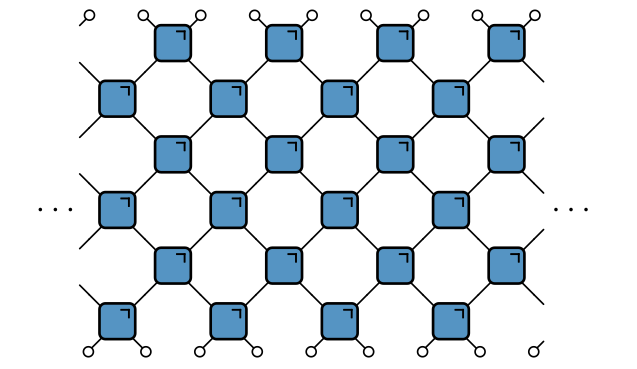Research Highlights
Dual-unitary circuit models of thermalization
Minimal exactly solvable models for a wide range of many-body dynamics are constructed.

Complete unitary time evolution represented by repeated application of staggered two-site gates.
The dynamics of isolated systems under general unitary evolution remains one of the fundamental problems in many-body physics. In recent years, it has been realized that lattice models where the time evolution is governed by local unitary quantum circuits can serve as a minimal model for the study of quantum dynamics. Such circuit dynamics exhibit many of the features expected in generic many-body dynamics, such as the appearance of a causal light cone and thermalization — the relaxation of correlations to (thermal) equilibrium. Still, exact results in such unitary circuits remain scarce, often requiring either randomness or the restriction to fine-tuned integrable models characterized by strongly nonergodic and hence nongeneric dynamics.
In this work, we show how to systematically construct classes of dual-unitary circuit models. Dual-unitary gates are characterized by the property that the resulting circuit evolution is unitary in both time and space. As a result, correlations vanish everywhere except at the edge of the causal light cone, where they can be calculated analytically at all time scales. The resulting dynamics encompass ergodic as well as nonergodic thermalization to (generalized) Gibbs ensembles, and are also shown to support more exotic phenomena such as time crystals and prethermalization. Due to the relative simplicity of the underlying construction, all time scales and steady states can be fully characterized analytically.
Ergodic and Nonergodic Dual-Unitary Quantum Circuits with Arbitrary Local Hilbert Space Dimension, Pieter W. Claeys and Austen Lamacraft, Phys. Rev. Lett. 126, 100603 (2021)